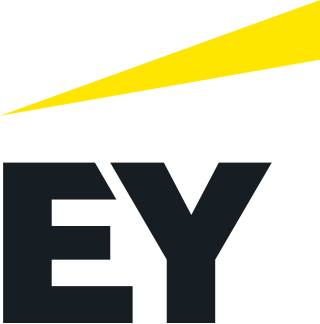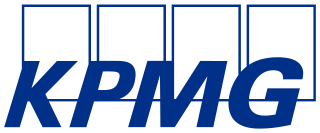Accounting, also known as accountancy, is the process of recording and processing information about economic entities, such as businesses and corporations. Accounting measures the results of an organization's economic activities and conveys this information to a variety of stakeholders, including investors, creditors, management, and regulators. Practitioners of accounting are known as accountants. The terms "accounting" and "financial reporting" are often used interchangeably.
Nortel Networks Corporation (Nortel), formerly Northern Telecom Limited, was a Canadian multinational telecommunications and data networking equipment manufacturer headquartered in Ottawa, Ontario, Canada. It was founded in Montreal, Quebec in 1895 as the Northern Electric and Manufacturing Company. Until an antitrust settlement in 1949, Northern Electric was owned mostly by Bell Canada and the Western Electric Company of the Bell System, producing large volumes of telecommunications equipment based on licensed Western Electric designs.

The U.S. Securities and Exchange Commission (SEC) is an independent agency of the United States federal government, created in the aftermath of the Wall Street Crash of 1929. Its primary purpose is to enforce laws against market manipulation.

MCI, Inc. was a telecommunications company. For a time, it was the second-largest long-distance telephone company in the United States, after AT&T. WorldCom grew largely by acquiring other telecommunications companies, including MCI Communications in 1998, and filed for bankruptcy in 2002 after an accounting scandal, in which several executives, including CEO Bernard Ebbers, were convicted of a scheme to inflate the company's assets. In January 2006, the company, by then renamed MCI, was acquired by Verizon Communications and was later integrated into Verizon Business.

Ernst & Young Global Limited, trade name EY, is a British multinational professional services partnership based in London, England. EY is one of the largest professional services networks in the world. Along with Deloitte, KPMG and PwC, it is considered one of the Big Four accounting firms. It primarily provides assurance, tax, information technology services, consulting, and advisory services to its clients.

Creative accounting is a euphemism referring to accounting practices that may follow the letter of the rules of standard accounting practices, but deviate from the spirit of those rules with questionable accounting ethics—specifically distorting results in favor of the "preparers", or the firm that hired the accountant. They are characterized by excessive complication and the use of novel ways of characterizing income, assets, or liabilities, and the intent to influence readers towards the interpretations desired by the authors. The terms "innovative" or "aggressive" are also sometimes used. Another common synonym is "cooking the books". Creative accounting is oftentimes used in tandem with outright financial fraud, and lines between the two are blurred. Creative accounting practices are known since ancient times and appear world-wide in various forms.

The Sarbanes–Oxley Act of 2002 is a United States federal law that mandates certain practices in financial record keeping and reporting for corporations. The act, Pub. L. 107–204 (text)(PDF), 116 Stat. 745, enacted July 30, 2002, also known as the "Public Company Accounting Reform and Investor Protection Act" and "Corporate and Auditing Accountability, Responsibility, and Transparency Act" and more commonly called Sarbanes–Oxley, SOX or Sarbox, contains eleven sections that place requirements on all U.S. public company boards of directors and management and public accounting firms. A number of provisions of the Act also apply to privately held companies, such as the willful destruction of evidence to impede a federal investigation.

KPMG International Limited is a British multinational professional services network, and one of the Big Four accounting organizations, along with Ernst & Young (EY), Deloitte, and PwC. The name "KPMG" stands for "Klynveld Peat Marwick Goerdeler". The initialism was chosen when KMG merged with Peat Marwick in 1987.

PricewaterhouseCoopers International Limited is a British multinational professional services brand of firms, operating as partnerships under the PwC brand, based in London, England. It is the second-largest professional services network in the world and is considered one of the Big Four accounting firms, along with Deloitte, EY, and KPMG.
Equity Funding Corporation of America was a Los Angeles-based U.S. financial conglomerate that marketed a package of mutual funds and life insurance to private individuals in the 1960s and 70s.

The Enron scandal was an accounting scandal involving Enron Corporation, an American energy company based in Houston, Texas. When news of widespread fraud within the company became public in October 2001, the company filed for bankruptcy and its accounting firm, Arthur Andersen—then one of the five largest audit and accountancy partnerships in the world—was effectively dissolved. In addition to being the largest bankruptcy reorganization in U.S. history at that time, Enron was cited as the biggest audit failure.

Bernard Lawrence Madoff was an American financial criminal and financier who was the admitted mastermind of the largest known Ponzi scheme in history, worth an estimated $65 billion. He was at one time chairman of the Nasdaq stock exchange. Madoff's firm had two basic units: a stock brokerage and an asset management business; the Ponzi scheme was centered in the asset management business.
David G. Friehling is an American accountant who was arrested and charged in March 2009 for his role in the Madoff investment scandal. He subsequently pleaded guilty to rubber-stamping Bernard Madoff's filings with regulators rather than fully reviewing them. His role in covering up Madoff's massive Ponzi scheme makes it the largest accounting fraud in history.
Fairfield Greenwich Group is an investment firm founded in 1983 in New York City. The firm had among the largest exposures to the Bernard Madoff fraud.
Cohmad Securities was a US company whose main business was to introduce investors to the Bernard Madoff investment company for which it received commission based on the amount invested. The company, whose name combines “Cohn” and “Madoff,” was founded in 1985 by Bernard Madoff and Maurice Cohn, Madoff’s friend and former neighbor. Its office was located at the same address as Madoff's firm, and it employed between 10 and 20 employees with annual sales between $1M and $5M.

Frank DiPascali Jr. was an American fraudster and financier who was a key lieutenant of Bernie Madoff for three decades. He referred to himself as the company's "director of options trading" and as "chief financial officer". For a number of years, he played a key part in the daily operation of the Madoff investment scandal, later recounting how he helped manipulate billions of dollars in account statements so clients would believe that they were creating wealth for them.

The Madoff investment scandal was a major case of stock and securities fraud discovered in late 2008. In December of that year, Bernie Madoff, the former Nasdaq chairman and founder of the Wall Street firm Bernard L. Madoff Investment Securities LLC, admitted that the wealth management arm of his business was an elaborate multi-billion-dollar Ponzi scheme.

Participants in the Madoff investment scandal included employees of Bernard Madoff's investment firm with specific knowledge of the Ponzi scheme, a three-person accounting firm that assembled his reports, and a network of feeder funds that invested their clients' money with Madoff while collecting significant fees. Madoff avoided most direct financial scrutiny by accepting investments only through these feeder funds, while obtaining false auditing statements for his firm. The liquidation trustee of Madoff's firm has implicated managers of the feeder funds for ignoring signs of Madoff's deception.
The recovery of funds from the Madoff investment scandal has been underway since the scandal broke in December 2008. That month, recovery trustee Irving Picard received funds from the Bank of New York account where Bernard Madoff held new investments into his Ponzi scheme. As it has been concluded that no legitimate investments were made on the investors' behalf for at least the last 12 years of operation, recovery has proceeded on a "money in/money out" basis. Investors are entitled to receive no more than the nominal cash amounts that they paid in and did not subsequently withdraw, without regard to inflation, interest, opportunity cost or the false statements that Madoff provided them. Those statements combined to a total balance of approximately $64 billion, while the admitted claims amount to $19.5 billion. As of March 2024, the trustee had recovered $14.7 billion toward these claims through legal action against Madoff associates, feeder funds and beneficiaries of the scheme, and had made fifteen distributions to investors. Action by the Department of Justice has recovered an additional $4 billion.
The WorldCom scandal was a major accounting scandal that came into light in the summer of 2002 at WorldCom, the USA's second-largest long-distance telephone company at the time. From 1999 to 2002, senior executives at WorldCom led by founder and CEO Bernard Ebbers orchestrated a scheme to inflate earnings in order to maintain WorldCom's stock price.










